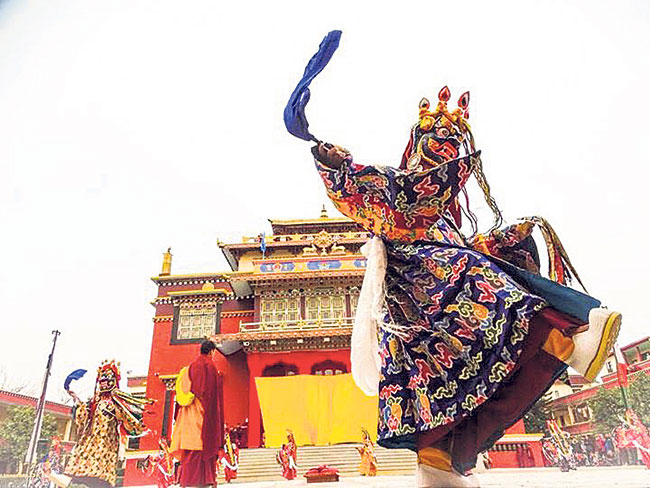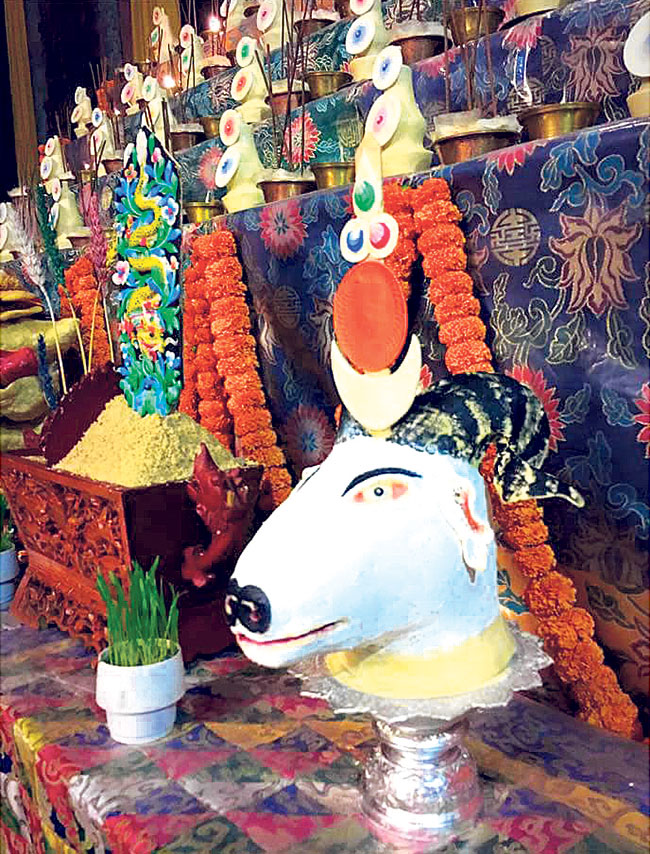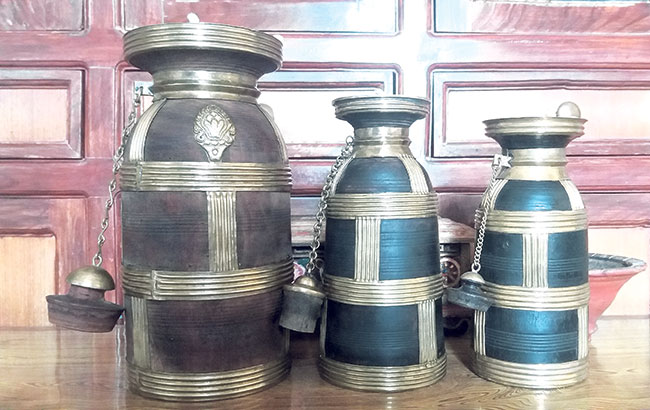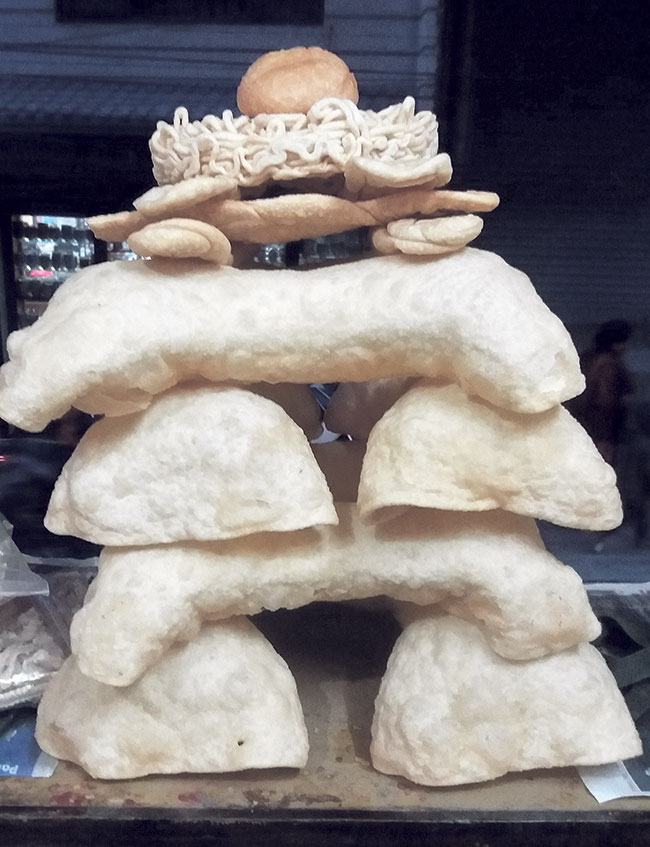Cham: The Dance Meditation (With Video)
5 years ago

5 years ago

5 years ago

5 years ago

5 years ago

5 years ago

Gyalpo Lhosar, mostly observed in the winter, adds more fun to the morning chills of February. This year it is being celebrated on Friday. The word ‘Lo’ meaning ‘year’ and ‘Sar’ meaning ‘new’ completes the word ‘Lhosar’. Gyalpo Lhosar marks the beginning of Tibetan New Year. The festival is mostly celebrated by Sherpas and Tibetans, while some Hyolmo and Tamang communities also celebrate it. There are 12 years in the Tibetan calendar, each categorized under a variety of animals.
Since this Gyalpo Lhosar 2145 marks the dog year, it is also called the ‘Year of the Dog’. As the word Gyalpo means ‘King’, ancient Tibetan history defines that the day is celebrated because a Tibetan king, Tri Ralpachen, won victory over a Mongolian warrior on the very day. It is a 15-day celebration, while the main celebration takes place during the first three days. To mark this annual occasion, listed below are four major essentials of Gyalpo Lhosar.
Chham (Tsam)
 Gyalpo Lhosar also calls for sacred prayer events and religious programs at different Buddhist monasteries. In the early morning of the first day, people visit monasteries and receive blessing from Rinpoche (Buddhist guru) and also from the elderly members of the family. Every year on the occasion, chham (a scared dance) is performed in monasteries for interested viewers. It is generally performed praying for peace and prosperity that the New Year is believed to bring to its followers. A group of monks donning heavy costumes and face masks perform the sacred dance on the premises of various monasteries. The dance is carried out in a set of beats and rhythms with religious musical instruments.
Gyalpo Lhosar also calls for sacred prayer events and religious programs at different Buddhist monasteries. In the early morning of the first day, people visit monasteries and receive blessing from Rinpoche (Buddhist guru) and also from the elderly members of the family. Every year on the occasion, chham (a scared dance) is performed in monasteries for interested viewers. It is generally performed praying for peace and prosperity that the New Year is believed to bring to its followers. A group of monks donning heavy costumes and face masks perform the sacred dance on the premises of various monasteries. The dance is carried out in a set of beats and rhythms with religious musical instruments.
Chhemar
 Considered as one of the ancient offerings to god, chhemar is a mixture of quality assortment of foods. The wooden container that consists of chhemar is equally divided in two sections where a mixture of milk, honey, ghee, curd, fruit and nuts is kept on the left side while the mixture of tsampa (fried wheat flour), wheat and millet on the right. On the center, decorative figures of flowers are made from torma (a mixture of flour and butter) to accentuate the look of chhemar. Its consumption is rare and especially done on the occasion of Gyalpo Lhosar.
Considered as one of the ancient offerings to god, chhemar is a mixture of quality assortment of foods. The wooden container that consists of chhemar is equally divided in two sections where a mixture of milk, honey, ghee, curd, fruit and nuts is kept on the left side while the mixture of tsampa (fried wheat flour), wheat and millet on the right. On the center, decorative figures of flowers are made from torma (a mixture of flour and butter) to accentuate the look of chhemar. Its consumption is rare and especially done on the occasion of Gyalpo Lhosar.
Changkol
 Originated from Tibet, changkol is a type of home brewed beer which can be made out of rice, millet and corn. As per the ancient belief, changkol is believed to have health benefits and help in enhancing physical immunity. It is especially used as an offering to god and also for prayer purposes. Kept in a special container called ‘dambey’, the rim of the container is decked with a tiny blob of butter which generally symbolizes good luck. Changkol is served to the family members once the praying and offering are finished.
Originated from Tibet, changkol is a type of home brewed beer which can be made out of rice, millet and corn. As per the ancient belief, changkol is believed to have health benefits and help in enhancing physical immunity. It is especially used as an offering to god and also for prayer purposes. Kept in a special container called ‘dambey’, the rim of the container is decked with a tiny blob of butter which generally symbolizes good luck. Changkol is served to the family members once the praying and offering are finished.
Dherka
 Dherka is one of the special offerings made to god on the very first day of Lhosar. It consists of flour based food items known as khapse and bhulu. All of these are stacked and layered on top of each other. Khapse is a basically a flat and crunchy food made out of flour, sugar and milk mixture. Bhulu is a round shaped flour-based food with the sugar powders sprinkled on the top of it. Both of the items are fried in oil which gives them a light brown texture and a crunchy taste. Beside these items, dherka also consists of different food items like coconut, a variety of fruits and nuts, babar (rice chapatti) and deysi (a mixture of rice, ghee, honey and dry fruits). People these days prefer adding up a wide variety of ingredients to make dherka more special for this once-in-a-year occasion.
Dherka is one of the special offerings made to god on the very first day of Lhosar. It consists of flour based food items known as khapse and bhulu. All of these are stacked and layered on top of each other. Khapse is a basically a flat and crunchy food made out of flour, sugar and milk mixture. Bhulu is a round shaped flour-based food with the sugar powders sprinkled on the top of it. Both of the items are fried in oil which gives them a light brown texture and a crunchy taste. Beside these items, dherka also consists of different food items like coconut, a variety of fruits and nuts, babar (rice chapatti) and deysi (a mixture of rice, ghee, honey and dry fruits). People these days prefer adding up a wide variety of ingredients to make dherka more special for this once-in-a-year occasion.
Leave A Comment